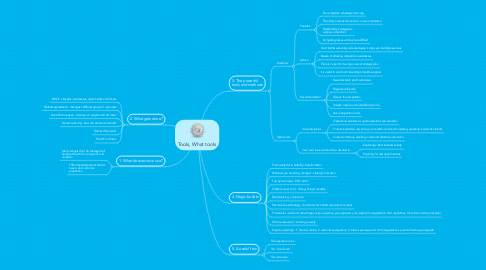
1. 1. What do executive use?
1.1. Many mangers don't do strategy at all because the world is so dynamic and uncertain
1.2. 75% of executive teams did not have a clear customer proposition
2. 2. What gets done?
2.1. SWOT - strengths, weaknesses, opportunities and threats
2.2. Market segmentation - distinguish different groups of customers
2.3. Value Chain analysis - working out margins and cost ratios
2.4. Scenario planning - best and worst case forecast
2.5. Balanced Scorecard
2.6. Porter Five Forces
3. 3. The powerful tools and methods
3.1. Checklists
3.1.1. Features
3.1.1.1. No competitive advantage lasts long
3.1.1.2. The ability to break the mould is a core competence
3.1.1.3. Predictability is dangerous, surprise is important
3.1.1.4. Competing makes winning more difficult
3.1.2. Advice
3.1.2.1. Don't bother sustaining old advantages; it stops you building new ones
3.1.2.2. Beware of attacking competitors' weaknesses
3.1.2.3. There is no point in having an overall strategic plan
3.1.2.4. It is useful to send out misleading competitive signals
3.1.3. Recommendation
3.1.3.1. Devastate rivals' profit sanctuaries
3.1.3.2. Plagiarize with pride
3.1.3.3. Deceive the competition
3.1.3.4. Unleash massive and overwhelming force
3.1.3.5. Raise competitors' costs
3.2. Option lists
3.2.1. Value disciplines
3.2.1.1. Operational excellence: superb operations and execution
3.2.1.2. Product leadership: very strong in innovation and brand marketing, operating in dynamic markets
3.2.1.3. Customer intimacy: excelling in customer attention and service
3.2.2. how much resource should be devoted to:
3.2.2.1. Exploiting current business activity
3.2.2.2. Exploring for new opportunnities
